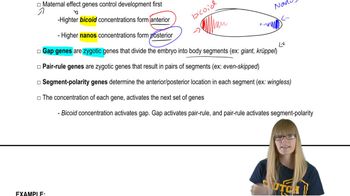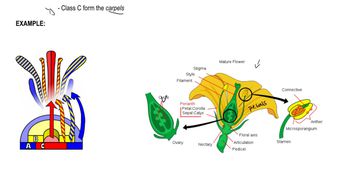Table of contents
- 1. Introduction to Genetics51m
- 2. Mendel's Laws of Inheritance3h 37m
- 3. Extensions to Mendelian Inheritance2h 41m
- 4. Genetic Mapping and Linkage2h 28m
- 5. Genetics of Bacteria and Viruses1h 21m
- 6. Chromosomal Variation1h 48m
- 7. DNA and Chromosome Structure56m
- 8. DNA Replication1h 10m
- 9. Mitosis and Meiosis1h 34m
- 10. Transcription1h 0m
- 11. Translation58m
- 12. Gene Regulation in Prokaryotes1h 19m
- 13. Gene Regulation in Eukaryotes44m
- 14. Genetic Control of Development44m
- 15. Genomes and Genomics1h 50m
- 16. Transposable Elements47m
- 17. Mutation, Repair, and Recombination1h 6m
- 18. Molecular Genetic Tools19m
- 19. Cancer Genetics29m
- 20. Quantitative Genetics1h 26m
- 21. Population Genetics50m
- 22. Evolutionary Genetics29m
14. Genetic Control of Development
Developmental Patterning Genes
Problem 19a
Textbook Question
Textbook QuestionYou are traveling in the Netherlands and overhear a tulip breeder describe a puzzling event. Tulips normally have two outer whorls of brightly colored petal-like organs, a third whorl of stamens, and an inner (fourth) whorl of carpels. However, the breeder found a recessive mutant in his field in which the outer two whorls were green and sepal-like, whereas the third and fourth whorls both contained carpels. What can you speculate about the nature of the gene that was mutated?
 Verified Solution
Verified SolutionThis video solution was recommended by our tutors as helpful for the problem above
Video duration:
4mPlay a video:
185
views
Was this helpful?
Related Videos
Related Practice
Showing 1 of 2 videos


